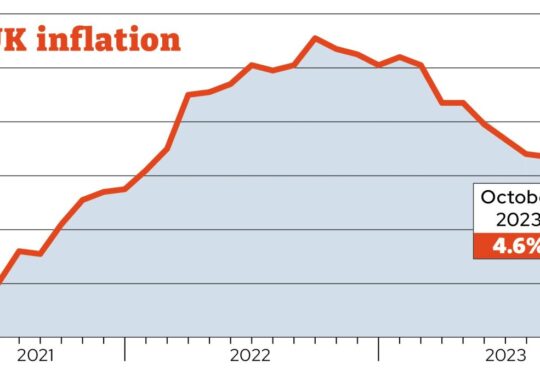

Image source: Getty Images
With the UK State Pension not being enough to live on, targeting £5,000 in passive income to top it up could be a very good move.
One way to achieve that kind of annual income might be to build up a pot of £125,000 in a Cash ISA paying 4% per year. Then take the tax-free interest. And some Cash ISAs are actually offering returns of around that right now.
Does that sound like a winner? Well, returns like that are for one-year fixed terms, so I think there’s a better way.
Falling interest
One problem is that interest is almost certainly not going to be maintained at 4% for long. It’s only possible now because Bank of England rates are so high, and that’s to tackle inflation. When inflation comes down, so will base rates. And so, no doubt, will Cash ISA rates.
For me, there’s a superior alternative. And that’s using a Stocks and Shares ISA instead.
The tax protection of an ISA can be attractive. But saving tax is no great benefit if the returns are poor to start with. I’d choose to pay tax on a superior return than get an inferior return tax-free any day.
Please note that tax treatment depends on the individual circumstances of each client and may be subject to change in future. The content in this article is provided for information purposes only. It is not intended to be, neither does it constitute, any form of tax advice. Readers are responsible for carrying out their own due diligence and for obtaining professional advice before making any investment decisions.
Stocks and Shares ISA
My preference for Stocks and Shares ISAs, then, is because of their history of solid returns. Over the past 10 years, we’ve seen average annual Stocks and Shares ISA return of 9.6%.
There’s no guarantee that will be repeated. And some years, a Stocks and Shares ISA is likely to lose money. On average, returns fell 13.3% in the 2019-20 year.
How have shares performed over longer timescales? Over the past 20 years, average annualised FTSE 100 returns come in at 6.9%. And I think most private investors would struggle to find something likely to generate better gains over the long term.
Realistic goals
Targeting returns of 7% per year from shares seems realistic on that basis, at least with a long-term horizon. To earn £5,000 per year from a 7% return, we’d need a pot of approximately £71,500.
Building up that kind of money in the first place, at the same annual return, should only take a little over three years for those who can invest the full £20,000 annual allowance.
Granted, few of us have that much to spare. But by investing a more achievable £100 per week, we could grow the necessary pot in only around 10 years.
Shares are best?
Investing in a Stocks and Shares ISA really has to be a long-term activity, I reckon. And investors need to be happy to take the risk of short-term poor performance, even losses.
But I remain convinced that the most effective way to target long-term passive income is by buying shares in top UK companies. The more we can set aside each month, and the longer we can keep it going, the more comfortable our retirement is likely to be.






